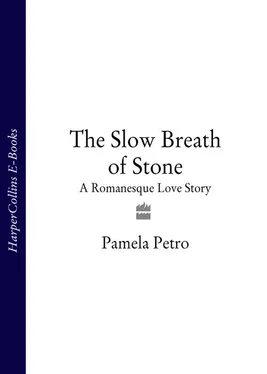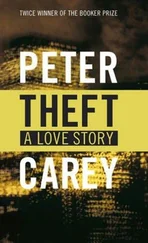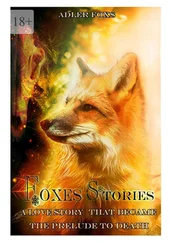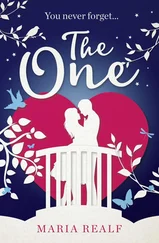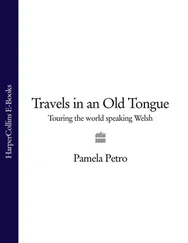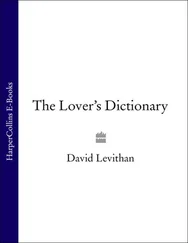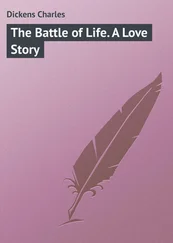1 ...6 7 8 10 11 12 ...17 About 65 million years ago the dinosaurs vanished abruptly and the Mesozoic seas began to dry up, bringing the era to a close. As they evaporated they left behind limestone outcrops, where masons quarried only a thousand years ago for stone with which to build and sculpt Romanesque churches. Not quite a hundred years ago the Porters drove across these limestone plateaux in their 1920 Fiat, in search of the masons’ handiwork; today I was doing the same in my rented Renault. Had any of us been a few million years earlier, we would have needed a boat.
As I approached the crossroads village of Livernon – that is all it was, literally, a crossroads – I came upon a pile of bones left over from this fathomless, geological past: an acre, maybe, of loose, palm-sized rocks, pure white, for all the world like an archetypal joke, a caveman’s trash heap in a cartoon. I slammed on the brakes and got out and took one as a souvenir. It smelled of both seashells and sanctity; it smelled of church. There was latent sculpture underfoot, sanctuaries, farmhouses, walls, and villas. This was where Romanesque sculpture had come from and what had made it possible in the first place – this landscape, this stone, this history that so dwarfed my imagination. Samuel Taylor Coleridge, climbing a mountain in Germany, once defined the sublime by saying that it resided in a suspension of the powers of comparison. On that afternoon the causse achieved sublimity, as geological time struck my associative memory stone cold mute.
So I retracted back into the sphere of my kind, projecting human aspirations on the obliging rock. So much potential all around, and what did I find but the simplest, perhaps the first, stone structure of all: a dolmen, the evolutionary ancestor of all European building.
Just outside Livernon I saw a sign for the Dolmen de la Pierre-Martine. For the same reason that Quercy and the Rouergue boast an abundance of old churches they also, not surprisingly, have the market cornered on Stone-Age structures. There is a greater concentration of dolmens, or cromlechs as they’re also known, in this part of southern France than anywhere else in Europe. Quercy has eight hundred dolmens on record; the Rouergue has a thousand, most of them about 4,500 to 3,500 years old. The pursuit of this particular one led me down a farm track of such beauty that my throat ached. The grey, dry-stone walls had fallen into lavender shadow, behind which branches of scrub oak, roughly interlaced, made shard-patterns of the sky. Bells sounded as ponies bent down to graze.
The dolmen wasn’t much to look at; two of its supporting slabs had been reinforced with concrete to render its massive capstone perfectly flat. A dog’s leash lay on top, domesticating the tomb by association. It looked more like a picnic table than the skeleton of a prehistoric gravesite once filled with human bones (the horizontal and vertical megaliths originally would have been covered with earth, forming a tumulus). I taped my bit of limestone on it and tried to recall when I’d first begun to think about stone. My name, Petro, means ‘stone’ in Greek, and my father has collected gems and minerals since I was a child. But it was only when I was about forty that I began to suspect that my lithic adventures in life – dolmen hunting in a beat-up Renault in Portugal, toting dinosaur footprints to school as a child, a yen to build dry-stone walls – might add up to more than casual appreciation.
Shortly after my fortieth birthday I’d found myself crouching in a cave in Tuscany, inspecting an Etruscan relief carving of a faceless woman, her legs impossibly splayed outward like wings. A leaflet told me that she was a ‘mermaid with two tails’. I recognized her as a fertility goddess. I touched her shin, entranced. The other visitors wandered off, but an elderly Italian guide lingered behind. ‘You love this,’ he said in halting English, taking my hand and pressing it against the stone.
Over the next months it occurred to me that he was right. I didn’t just love Romanesque sculpture, I loved stone itself. Dogs may be our best friends, but stone is our most steadfast companion. It accepts whatever we find significant – our scratchings and carvings, our borings and borrowings – and remembers them far longer than we do until, like this dolmen, they become secrets. I trusted the mute companionship of stones, their testament to ancient lives and even older weather, and, especially, their humbling perspective. Compared to us, stones are immortal.
The only hotel in Livernon, a shifty-looking place, was closed, so I drove on to the much larger town of Figeac, not far from the Rouergue border. Venerable, mottled sycamore trees and neon advertisements lined streets crammed with rush-hour traffic. I could see a string of old hotels with lovely terraces on the far embankment overlooking the River Lot. In the forty-five minutes it took to travel three blocks to a bridge and cross the river, not a single parking space was left to be had. I bolted out of town in desperation, as fast as the Friday evening crush would permit, and fled south.
The ample croplands of the Lot Valley didn’t last long. Soon I was climbing, switch-backing up atop a high ridge, which gave onto the open, scrubby moors of the Causse de Limogne, another limestone plateau just south of that of Gramat. I bellowed out of the car window into the greying emptiness, noisy with relief. It was refreshing to find feral lands in France, where the trees aren’t pruned or planted in neat rows – an antidote to Gallic cultivation, in every sense of the word.
The next town I came to was called Cajarc, an old market village around an open square, which had been strung with coloured lights. I found a parking space in front of a café that also proved to be a hotel; inside, the owner-chef and his family were eating dinner before customers arrived. His wife jumped up when I walked in, letting the ladle she’d been gripping fall with a plop, handle first, into a big white tureen. There was a long moment in which no one seemed to move, or breathe, the air still as art. In the time it took to swallow, the impression vanished. The woman retrieved her spoon with a good-natured shrug, wiped the soup off her hand, and showed me to a room at the back.
A stairway led to seven second-storey rooms opening off an exterior corridor. She presented one and left me with a key, and I went back to the car to retrieve my suitcase. When I returned I’d forgotten which of the identical, numberless doors was mine. The fourth one, I thought, so I tried the key; it fitted, and I walked in. I had a moment’s deep dread – the rucksack I’d left was gone – before I decided, calmly, that this was simply the wrong room. I tried the fifth door, which also opened to my key but which was also empty; then the sixth, with the same result. With growing concern of several kinds I marched back to the third door, certain my key would work, and threw it open: inside a startled man in a wide-brimmed hat was placing a large bamboo staff against the wall. A different rucksack entirely, bound with a large scallop shell attached to a cord, sat on the bed. I apologized in embarrassment-addled French, and tried the second door, certain it couldn’t possibly be mine. It was.
All night long – a fluorescent light had glared directly outside the frosted glass door to my room, preventing measurable sleep – I amused myself with game-show scenarios presented by my skeleton key. Behind door number one lay this! Behind door number two lay that! Behind door number three stood – a pilgrim!
We met again at breakfast. ‘Bonjour, Madame,’ he greeted me. ‘Je suis un pèlerin.’ So you are, I thought.
He’d been driven to conversation with me because the locals – a fearsome pack of middle-aged men drinking strong coffee and beer at the bar, grunting to one another from their gullets – had confiscated the newspaper he had been reading while he’d gone to pick up his staff, which had fallen with a clatter. In between bites of local peach jam spread on a baguette, he told me he was walking the entire pilgrimage route to Santiago de Compostela. My eyes widened in honour. ‘In pieces, Madame,’ he specified. ‘I shall get no medal for speed. Last fall I walked from Le Puy en Velay to Conques in ten days. Now, this spring, I am walking from Conques to Moissac. I give my feet a rest in summer and winter. There are whole peach-halves in this confiture,’ he concluded, fishing one out of the pot with a spoon.
Читать дальше
